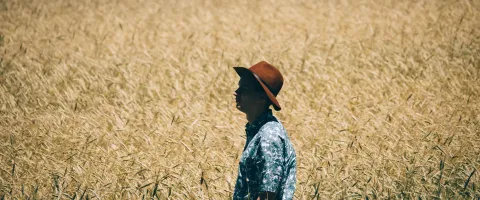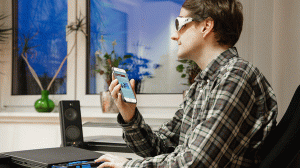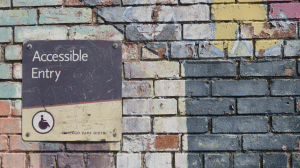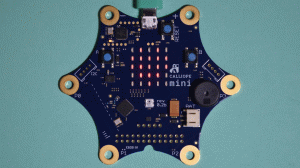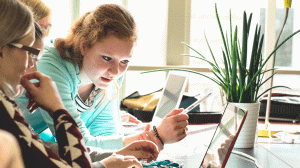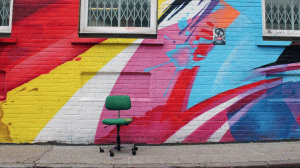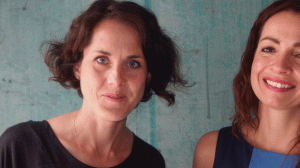This article was orgininally published on Whatamission and has been cross-posted with permission by the author.
There is much debate as to how social impact education can up the ante in building social innovators. (For an expert and very insightful cross-examination of this ongoing debate, check out The Stanford Social Innovation Review: The Future of Social Impact Education in Business Schools and Beyond). But for the sake of bringing something new to this discussion, first let’s reverse engineer this question of how to build innovators for social impact? What exactly does it actually mean to be an innovator? What does an innovator look like, think like, and feel like? Perhaps you instantly imagine the typically young, white founding fathers of some trendy startup named Airbnb, Uber, or Bla Bla Car? In fact, you probably don’t think of Dr Martin Luther King Jr and the civil rights movement who created one of the earliest carpooling systems during the Montgomery Bus Boycott (where black people refused to ride on segregated buses and therefore had to find other forms of transport).
Innovation always seems so shiny and new but to be an innovator is to be a rule breaker; someone who seeks new opportunities to push the boundaries and has the guts to not take no for an answer. An innovator is a risk-taker who disrupts the status quo despite a wall of resistance or a lack of readiness to think outside that box we are so often reminded of. Not everyone is an innovator but for those who are, it can be a long lonely road full of doubt, frustration, and rejection.
So how can we help these forward-thinkers, anti-bandwagoners, and anomalies to threaten our old and comfortable habits with weird and wonderfully new ideas in the spirit of social innovation?
Well, the first practice has already been hinted at above when imagining what an innovator looks like, or rather, doesn’t always look like. It’s a well-known fact that teams demonstrate higher levels of innovation when they are more diverse and inclusive. In this sense, it is important that schools, universities, and non-formal educators make programmes available to both the privileged and underprivileged. Cohorts need to reflect and represent changemakers irrespective of: gender; class; colour; culture; disability; or educational level (not forgetting more subtle barriers such as immigration status and English language fluency). Social impact education must reach those who live with and suffer the ‘problem’ on a daily basis for the simple fact that they are much more likely to creatively and resourcefully solve said problem as well as withstand the storm of executing their solution. So education providers should not shy away from the challenge of empowering the underdogs and unsung heroes of our ‘glocal’ ecosystem but rather find meaningful ways to reach those both lost and found on the sidelines and frontlines of our communities.
The second practice comes post recruitment and more during the incubation itself. As the name suggests, incubator programmes take participants into their womb to nurture them with all the knowledge, wisdom, and inspiration they’ve got. In session, participants sit, stand, and sit again listening, learning, post-it noting, ideating, design thinking, business model canvassing… and fingers crossed much more. Our budding innovators are told over and over again to just start doing, however, they’ve spent all this precious time absorbing and talking rather than learning by doing and executing. This is not the case for all social impact schools of course but it’s not an uncommon experience either. Here, the CEAL model (Community-based Entrepreneurship Action Learning) works well. The CEAL model challenges participants to come up with a team project that answers a local problem. Like this, participants’ understanding is not only tested but immediately put into practice. They get used to taking action, achieving small victories, celebrating small failures, pivoting, taking feedback, building confidence and breaking fear – all in a safe and guided environment. In other words, educators should think about how to create a culture of doing by creating a space where they are actually doing.
The third practice arrives after graduation day when our budding innovators begin their long and treacherous journeys into the unknown. This particular phase, coined by The Do School as the ‘Implementation Phase’ is crucial to the success of any social impact innovator or entrepreneur because here comes real life. Our seedlings will need all the continued guidance, ongoing support, and close mentoring that a programme’s resources can allow for. A Facebook group is simply not enough. People go back to their old routines, issues, and insecurities which they may not announce on a social media page that quickly goes quiet. Mentoring (virtual and/or physical) inspires motivation, encourages evaluation, and demands accountability. It also restores the balance between the often heavier focus on a hard skill-set learnt during incubation (such as brand messaging, team management, and impact measurement) and the increasingly important survival skills needed during implementation (such as perseverance, courage, and self-awareness) which are the backbone of any innovator who has lived to tell the tale. Educators should take a leaf out of The Do School’s mentorship methodology and understand that the learning curve for participants must not be driven by content but by contact.
Naturally this is not a definitive list of ‘best practices’ when building innovators for survival and success. The whole point of innovation is that nothing is or should be definitive. However, when nurturing innovation, what is most important is a lifelong nourishing of ideas, inquiry, insights, and instinct. Here, it’s not only the responsibility of educational institutions to stay ahead of the curve but rather the collective responsibility of our society to create a more habitable environment for our innovators to eventually disrupt.
About the author

Vanessa Faloye, is a learning facilitator, curriculum developer, and consultant in social impact education. She designs and delivers social innovation programmes for international organisations with the aim of empowering youth and marginalised groups to become social change-makers. She uses the multiple lenses of diversity, equity, and inclusion; critical and systems thinking; and problem-mapping in her pedagogical approach to educate her participants in the 'bigger picture'. She is also a motivational speaker on topics relating to social innovation. Vanessa holds a post-graduate certificate in Social Enterprise and Innovation at The Do School - Berlin, Germany. She is passionate (and slightly obsessed) with traveling, reading, and raving.
To read more on social impact education or get in touch with Vanessa about her consultation services, you can follow her at Twitter, Medium, and LinkedIn.
Originally published April 27, 2017
